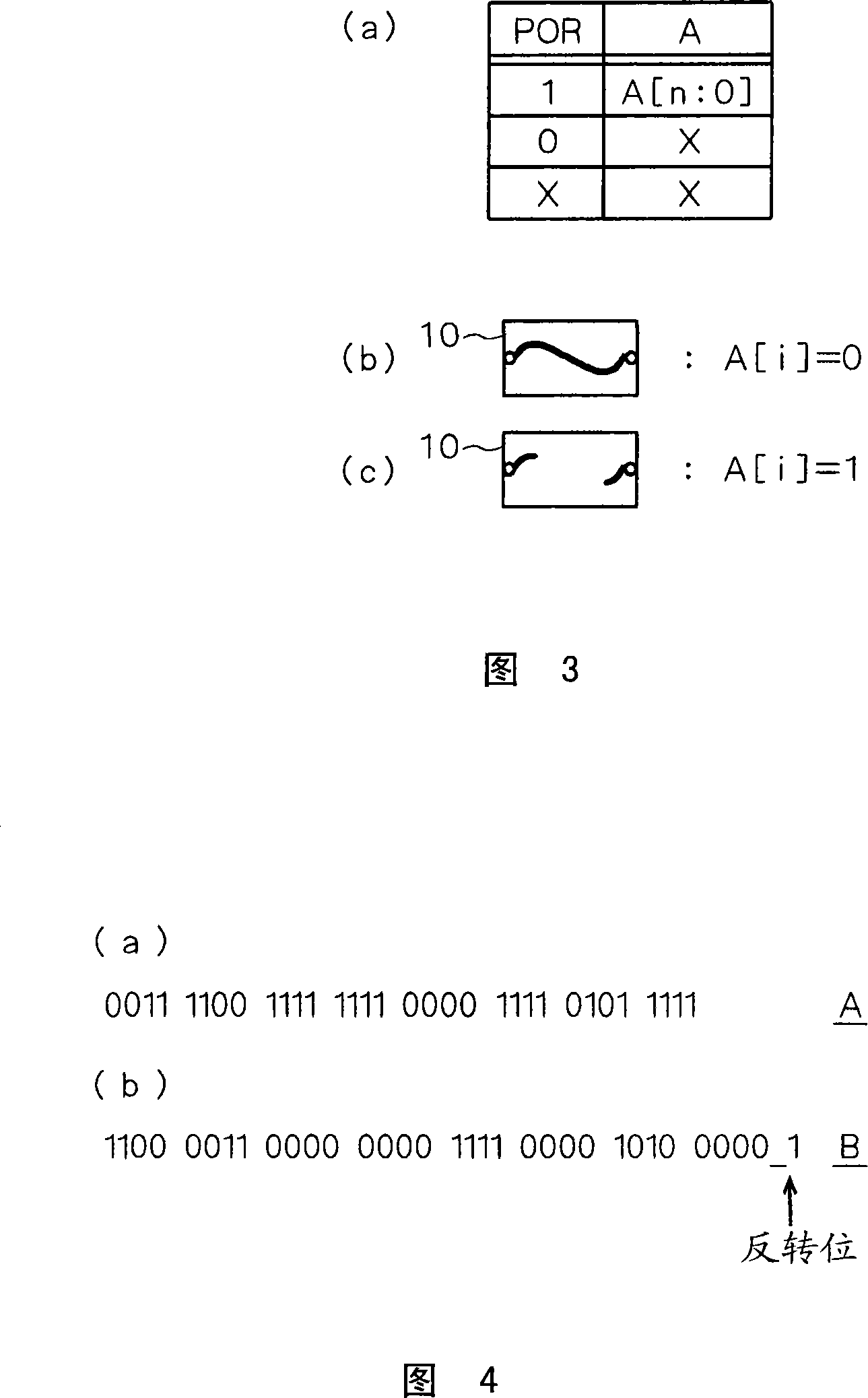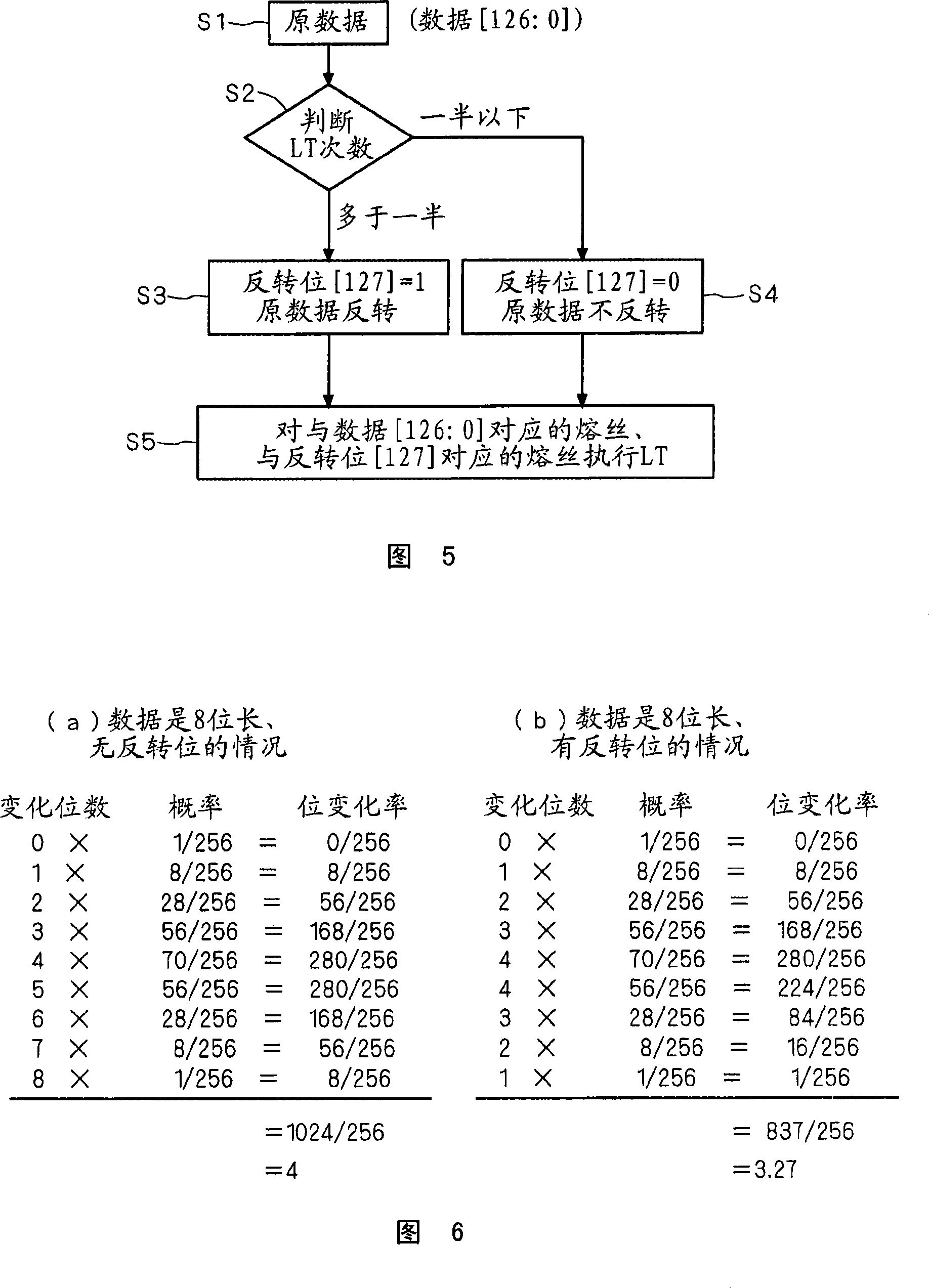Semiconductor device, unique ID of semiconductor device and method for verifying unique ID
A semiconductor, the only technology, applied in the direction of semiconductor devices, semiconductor/solid-state device components, computer security devices, etc., can solve the problems of complex initial value setting, troublesome retesting, and troublesome preparation, so as to reduce the number of laser trimming and improve Difficulty, the effect of shortening the manufacturing time
- Summary
- Abstract
- Description
- Claims
- Application Information
AI Technical Summary
Problems solved by technology
Method used
Image
Examples
Embodiment approach 1
[0047] FIG. 1 is a block diagram showing the configuration of an SOC (system on chip) 1000 according to Embodiment 1. As shown in FIG.
[0048] As shown in FIG. 1 , SOC 1000 includes fuse box 100 , MPU (micro processing unit) 200 (calculation processing unit), and I / F (interface) unit 30 . The fuse box 100 has a plurality of fuses (not shown in FIG. 1 ) recording unique IDs, and each fuse corresponds to each bit of the unique ID. MPU 200 has registers 21 and memory 22 .
[0049] In FIG. 1 , the unique ID recorded in the fuse box 100 is read out to the register 21 of the MPU 200 and transferred to the external device 200 via the I / F 300 . Alternatively, the unique ID read to the register 21 may be stored in the memory 22 from the register 21 and processed, then read to the register 21 again, and then transferred to the external device 200 via the I / F 300 .
[0050] Fig. 2 (a) is the schematic diagram that shows the fuse box 100 that unique ID is installed on the SOC, is equip...
Embodiment approach 2
[0083] In Embodiment 1, the case where one inverted bit is set for the entire data composed of one bit string was described. However, the actually processed data may contain a very small portion of "1" bits. In this case, by excluding this portion from the target of bit inversion, it is possible to further reduce the number of LTs. . That is, one inverted bit can be set only for a part of the data composed of one bit string.
[0084] 8 is a flowchart showing one step (unique ID recording step) in the manufacturing method of the semiconductor device according to the second embodiment. In FIG. 8 , bit [n] which is an inverted bit is set to bit string [n-1:0] which is n-bit long data. The bit string [n-1:0] can be divided into m-bit long bit string [m-1:0] and (n-m) bit long bit string [n-1:m] (m is (n-1) or less natural number), the bit [n] which is the inverted bit is set only for the bit string [n-1:m]. That is, the flow chart of FIG. 8 adds step S1' to the flow chart of F...
Embodiment approach 3
[0091] In Embodiment 2, a case was described in which one inversion bit is set for data constituted by one bit string. However, the present invention is not limited thereto, and alternatively, two or more inverted bits may be set for data composed of one bit string.
[0092] 9 is a flowchart showing one step (unique ID recording step) in the manufacturing method of the semiconductor device according to the third embodiment. In FIG. 9 , bits [n-1], [n] which are inversion bits are set to bit string [n-2:0] which is data of (n-1) bit length. The bit string [n-2:0] can be divided into k-bit long bit string [k-1:0], (m-k) bit long bit string [m-1:k] and (n-m-1) bit long Bit string [n-2:m] (k is a natural number below (m-1)), set the bit [n-1] as the reverse bit only for the bit string [m-1:k], only for the bit String [n-2:m] sets bit [n] which is the inverted bit. That is, the flow chart of FIG. 9 takes steps S1-S4 in the flow chart of FIG. 1:k] and [n-2:m] individually.
[0...
PUM
 Login to View More
Login to View More Abstract
Description
Claims
Application Information
 Login to View More
Login to View More - R&D
- Intellectual Property
- Life Sciences
- Materials
- Tech Scout
- Unparalleled Data Quality
- Higher Quality Content
- 60% Fewer Hallucinations
Browse by: Latest US Patents, China's latest patents, Technical Efficacy Thesaurus, Application Domain, Technology Topic, Popular Technical Reports.
© 2025 PatSnap. All rights reserved.Legal|Privacy policy|Modern Slavery Act Transparency Statement|Sitemap|About US| Contact US: help@patsnap.com



